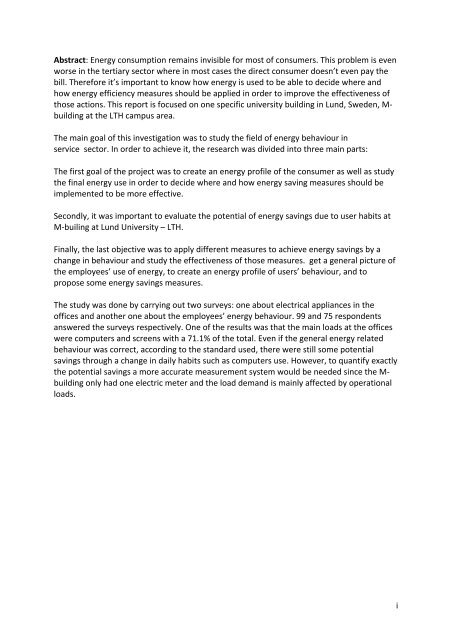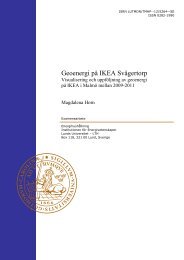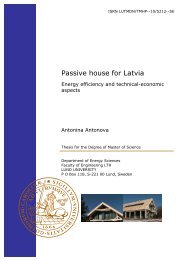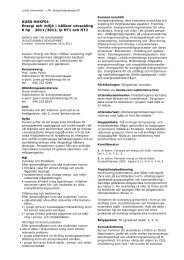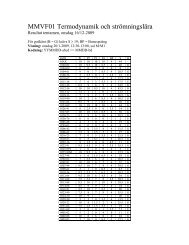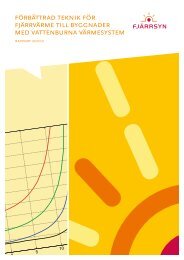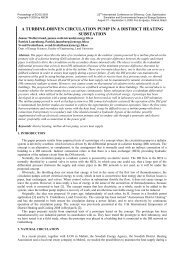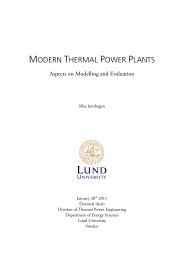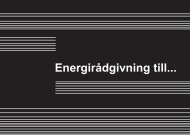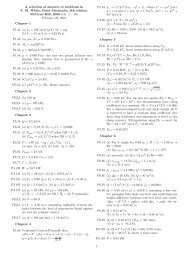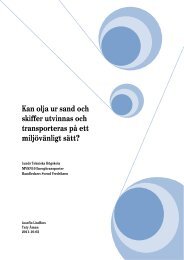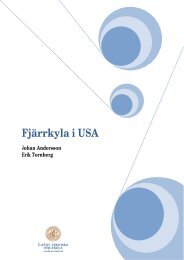Energy Consumption in Tertiary Buildings in Sweden - Case-study
Energy Consumption in Tertiary Buildings in Sweden - Case-study
Energy Consumption in Tertiary Buildings in Sweden - Case-study
You also want an ePaper? Increase the reach of your titles
YUMPU automatically turns print PDFs into web optimized ePapers that Google loves.
Abstract: <strong>Energy</strong> consumption rema<strong>in</strong>s <strong>in</strong>visible for most of consumers. This problem is even <br />
worse <strong>in</strong> the tertiary sector where <strong>in</strong> most cases the direct consumer doesn’t even pay the <br />
bill. Therefore it’s important to know how energy is used to be able to decide where and <br />
how energy efficiency measures should be applied <strong>in</strong> order to improve the effectiveness of <br />
those actions. This report is focused on one specific university build<strong>in</strong>g <strong>in</strong> Lund, <strong>Sweden</strong>, M-build<strong>in</strong>g<br />
at the LTH campus area. <br />
The ma<strong>in</strong> goal of this <strong>in</strong>vestigation was to <strong>study</strong> the field of energy behaviour <strong>in</strong> <br />
service sector. In order to achieve it, the research was divided <strong>in</strong>to three ma<strong>in</strong> parts: <br />
The first goal of the project was to create an energy profile of the consumer as well as <strong>study</strong> <br />
the f<strong>in</strong>al energy use <strong>in</strong> order to decide where and how energy sav<strong>in</strong>g measures should be <br />
implemented to be more effective. <br />
Secondly, it was important to evaluate the potential of energy sav<strong>in</strong>gs due to user habits at <br />
M-‐buil<strong>in</strong>g at Lund University – LTH. <br />
F<strong>in</strong>ally, the last objective was to apply different measures to achieve energy sav<strong>in</strong>gs by a <br />
change <strong>in</strong> behaviour and <strong>study</strong> the effectiveness of those measures. get a general picture of <br />
the employees’ use of energy, to create an energy profile of users’ behaviour, and to <br />
propose some energy sav<strong>in</strong>gs measures. <br />
The <strong>study</strong> was done by carry<strong>in</strong>g out two surveys: one about electrical appliances <strong>in</strong> the <br />
offices and another one about the employees’ energy behaviour. 99 and 75 respondents <br />
answered the surveys respectively. One of the results was that the ma<strong>in</strong> loads at the offices <br />
were computers and screens with a 71.1% of the total. Even if the general energy related <br />
behaviour was correct, accord<strong>in</strong>g to the standard used, there were still some potential <br />
sav<strong>in</strong>gs through a change <strong>in</strong> daily habits such as computers use. However, to quantify exactly <br />
the potential sav<strong>in</strong>gs a more accurate measurement system would be needed s<strong>in</strong>ce the M-build<strong>in</strong>g<br />
only had one electric meter and the load demand is ma<strong>in</strong>ly affected by operational <br />
loads. <br />
i


